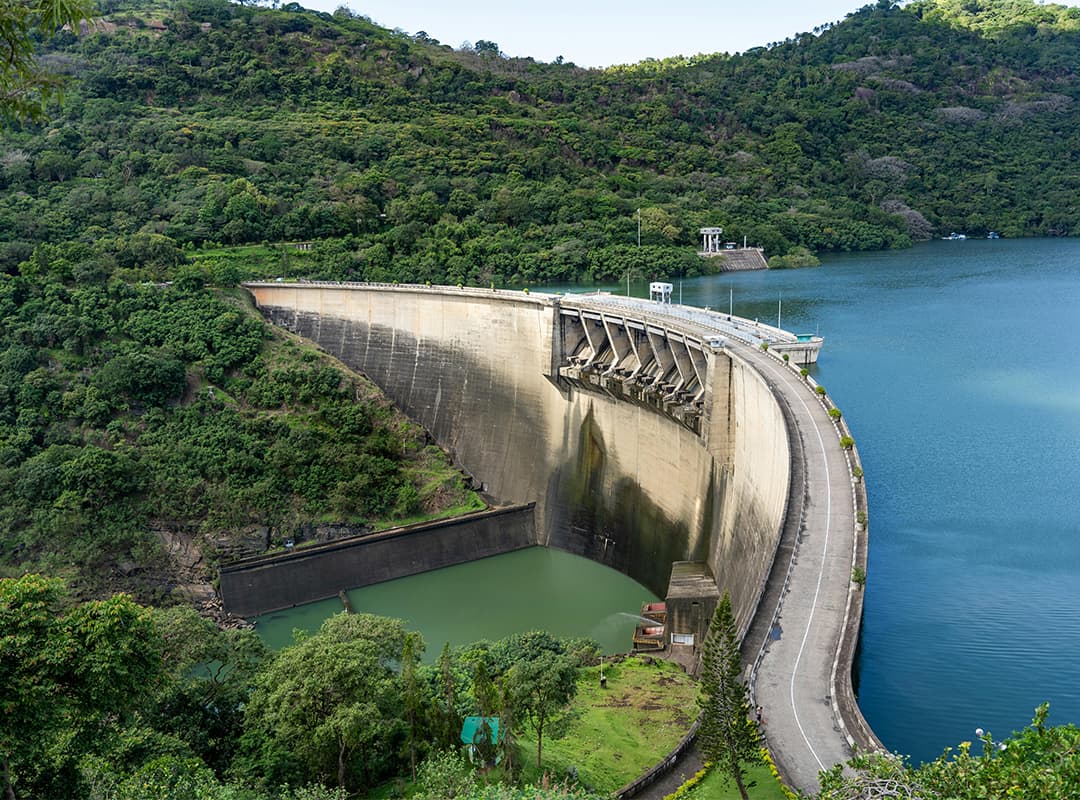The fundamental elements are a spillway, a settling basin (forebay), a discharge pipe, and a small canal or “lit”. Water is diverted from the main river channel through the spillway. A weir is an artificial barrier crossing a river that regulates the flow of water through the intake. Before entering the turbine, solid particles are removed by passing the water through a settling tank. The water in the settling tank slows down enough for the solids to settle. A protective rack made of metal bars (debris rack) is usually located near the front of the bay to protect the turbines from damage by larger materials such as rocks, wood, leaves, and artificial debris that may be found in the stream.
To understand the factors that influence the benefits of hydropower, it is first necessary to understand the role of the main components in a hydropower plant. For small hydropower plants, the following components are distinguished.
A dam is a plant structure that is responsible for raising and maintaining the level upstream of the engine room by creating artificially localized irregularities.
The spillway is designed to drain the higher design flow to maintain the required water level in the reservoir, avoiding the risk of water reaching the dam crest. This is a safety design of the dam.
The generation circuit consists of low-pressure intake canals, pipes or diversion tunnels, any pumping shafts or loading chambers, high-pressure canals or forced tunnels, outdoor or underground power plants, tunnels and leakage channels. The generation circuit is designed to drive water to convert mechanical energy into electrical energy.
For the generation scheme we have:
- Intake: A structure for collecting water to a discharge pipeline or channel/drive tunnel;
- Channel and adduction tunnel: Structures responsible for the adduction of water to the forced discharge in shunt systems;
- Equilibrium chimney: aims to stabilize pressure changes resulting from partial or complete changes in water flow under initial conditions, load changes, or load disconnection of the generator set;
- Load chamber: is a structure that makes the transition between the channel and the water intake of the pressure pipeline. Its dimensions correspond to the critical conditions of start-up and sudden shutdown of the generator set;
- Pressure pipeline: a structure that connects the water intake to the power plant operating under pressure. Pressure pipes can be external or tunneled;
- Power plant: A structure that houses electrical and mechanical equipment. The typical layout of a power plant, as in any other project of this kind, depends on the type of turbine and generator;
- Tunnel or tailrace: Located downstream of the intake pipe between the powerhouse and the river, this is the channel through which turbine water is discharged and returned to the river.
